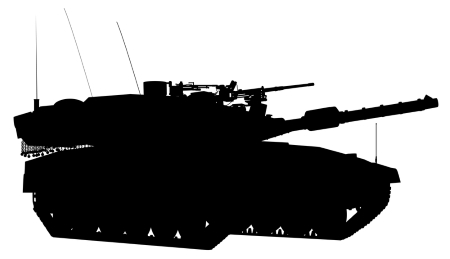Rocket Launchers, like the M270 Rocket Launcher, are not household words or concepts. To the average citizen, the rocket launcher might not seem to be that serious a weapon.

The Average Person May Consider a Rocket Launch Much Like a Bazooka. However, Modern Launchers Bring Massive Destruction to the Battle Field.
Perhaps the name conjures images of the shoulder-mounted rocket launchers seen in old movies and TV shows. Far from that humble weapon, the M270 is a battlefield beast. It is no wonder Ukraine has repeatedly requested it.
At ER Precision Optics, we thought you might like to understand more about the power of this weapons system. The M270 Rocket Launchers are unique packages of technology, transportation, and demolition.
You see, both the US and Britain, are sending these weapons to Ukraine. Thus, we thought you would like to know more about the M270 Rocket Launchers.
Basic Facts: the M270 Rocket Launchers
In the first place, picture a tank that’s been stretched. That’s just the chassis, the transport for the system. In the cab, you will have a three-man crew including a driver, a gunner, and a section chief.
- 22ft and 6 inches long is impressive for a Rocket Launcher.
- Likewise, the vehicle is also 9ft and 9 inches wide.
- M270 Rocket Launchers are heavily armored, so it weighs a whopping 55,000 pounds.
On its platform, soldiers can equip the M270 launcher with 12 rockets. The self-contained loading system manages two pods that hold six rockets each.
(By the way, the MLRS M270 Rocket Launcher is manufactured by Lockheed Martin’s Missiles and Fire Control business segment.)
Once again, in case you think this is an odd topic for an optics company, remember the wide range of technology this weapon embraces. From targeting to gimbals, to night vision, to GPS, to semi-conductors, modern weapons depend on companies like ER Precision Optics.
Why All the Fuss about Big Guns vs. Rockets?
While the US was putting together the weapons package for Ukraine, citizens became interested in the differences between the rocket launcher system and big guns like howitzers.
Experts have revealed, “Unlike traditional gun artillery, which used a powder charge to propel a shell through a gun tube, an artillery rocket uses a continuously burning rocket motor to travel to the target.”
A Little Bit of Back Story: Rockets’ Red Glare

Built on a Tank Chassis, Today’s Rocket Launchers Can Handle Rough Terrain. They “Shoot and Scoot”.
The idea of Rockets on the battlefield began in thirteenth-century China. Contrary to popular opinion, ancient China used them in battle, not just for fireworks.
Likewise, they “invented multiple-tube rocket launchers capable of launching up to one hundred projectiles.” Then, Rocket Launchers retired from the spotlight until the 1930s. That was when “the Soviet Army started to field the first modern rocket artillery units.”
Sometimes Ripple Fire Trumps Single Gun Tube
Regular artillery fires one tube of a gun at a time, but a Rocket Launcher has a cluster of tubes. With careful timing, the tubes can ripple-fire within a few seconds of each other. Therefore, you can see that rocket artillery has a much faster rate of fire than a big gun.
Certainly, there is a downside. As you might guess, reloading requires more time. And, worst of all, rocket launchers have been imprecise in targeting.
- “Unlike shells, whose impact point can be precisely computed by knowing the power of the powder charge, weight of the projectile, and the length of the gun tube…”
- However, as noted above, “a rocket flies free after exiting the tube, motor still burning.” Experts believe this “makes rockets inherently less accurate and more suited to saturation attacks…” And they add, “against area targets instead of point targets.”
From WWII to the 21st Century
It was the Soviets who showed us during World War II that the rocket launcher could shine in battle. They developed the A BM-13-16.
- It was a crude collection of bracketed steel tubes.
- They mounted them on a lend-lease Studebaker truck.
- Then they used the tubes to launch 16 eleven-pound high-explosive warheads 7.3 miles away. It was not pretty or exact, but it could scream deafening noises. And it could saturate an enemy area.
Presenting the US M270 Multiple Launch Rocket System (MLRS)
Now, let’s turn from history and further investigate the current battlefield beast. The M270 Multiple Launch Rocket System can fire its 12 227-millimeter rockets from its box launcher in less than 40 seconds. Let’s check out a few more features below:
1. Remember, it moves like a tank because it’s based on the same chassis as the M2 Bradley infantry fighting vehicle.
2. On its tracks it can move into position, fire, and move to another position to fire in five minutes.
3. Writer Kyle Mizokami states, “ This “shoot and scoot” tactic minimizes exposure to enemy counterbattery fire…”
4. The crew uses radar, GPS, and other technology to track back enemy rockets in midair.
5. Then, the crew can “determine the location of the enemy artillery units and destroy them before they can displace to a new firing position.”
Using the Right Tool for the Right Job
The M270 Rocket Launcher concentrates on medium to long-distance threats. They are great for destroying unit “assembly areas, fuel and ammunition depots, and headquarters units” behind enemy lines.
Recent History and the Use of the M270 Rocket Launchers
In the 1991 Persian Gulf War, the M270 truly distinguished itself as a weapon of war. “The rocket launchers earned the name “grid killers” for the ability of a single M270 to saturate a one-kilometer-by-one-kilometer box grid on a military map.”
In that wartime situation, an MLRS battalion had a total of twenty-seven M270s, giving U.S. Army divisions and artillery brigades incredible amounts of firepower. For more information, you might want to check out this online resource.
An Ever-Expanding Long-Range Beast

Modern Rocket Launchers Are More Precise and Destructive Than Ever Before.
The M270 can also carry an alternative munition that extends its range. We speak of the rather awesome ATACMs, or the Army Tactical Missile System.
1. Soldiers can load a large, plump rocket, ATACM. It’s big. It takes up the space of six rockets in an M270.
2. Be aware that this means each vehicle can only carry two ATACMs.
3. Armed thus, the M2170 can attack targets far beyond enemy lines. It can carry 950 antitank submunitions up to 80 miles away. And it is rumored that new versions of the ATACMs can go up to 186 miles.
4. Now, ATACMs rockets can attack moving ships at sea.
Loading Up More Technology
We now have improved rockets with GPS guidance. Thus, we can defeat that innate weakness of poor targeting. Now we can even destroy point targets by using proper munitions.
No, rockets artillery cannot replace Howitzers. However, the M270 Rocket Launchers are offering battlefield flexibilities to us and our allies.
In conclusion, technology is now making rocket launchers more accurate. Indeed, they have recently become technological marvels and beasts of the battlefield.


